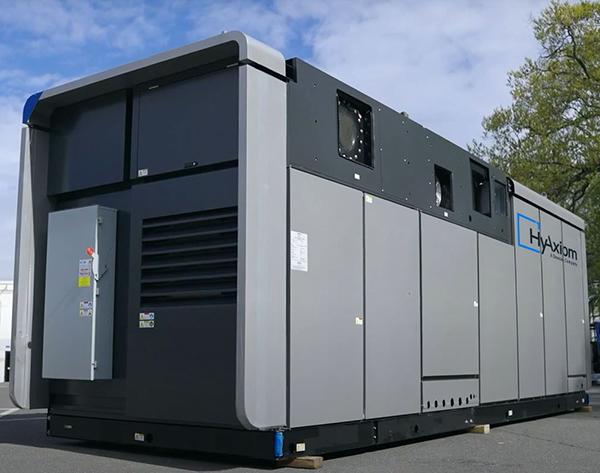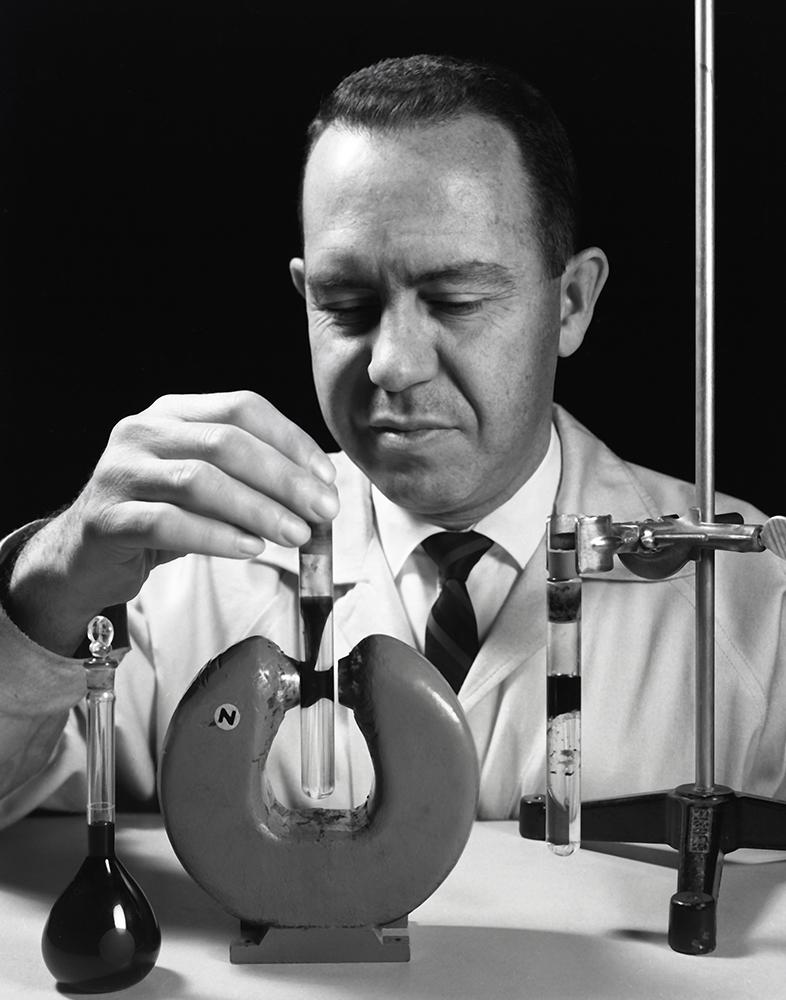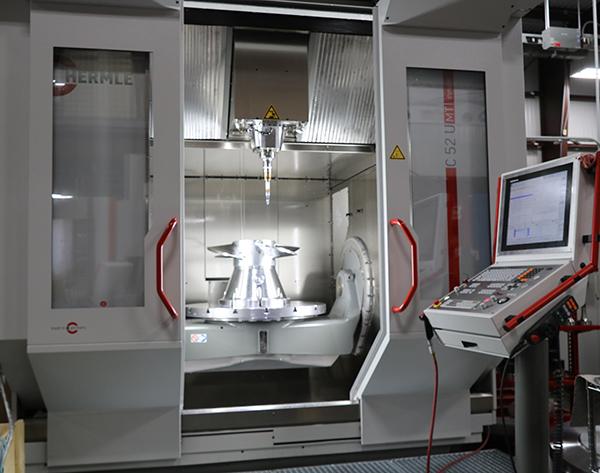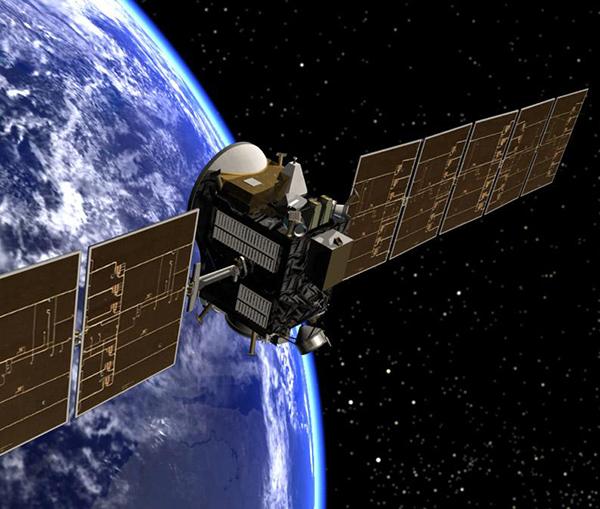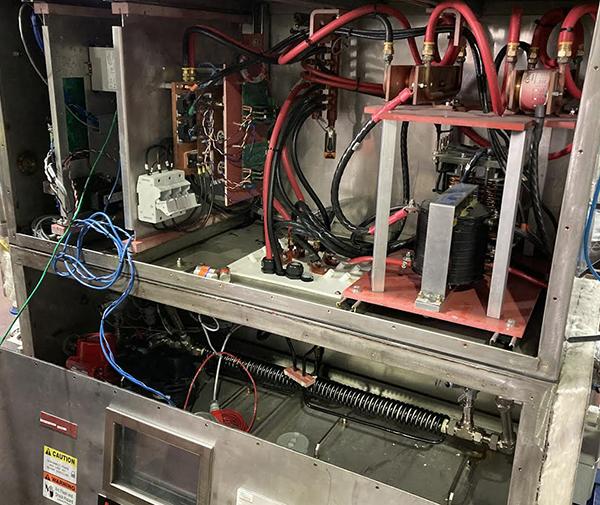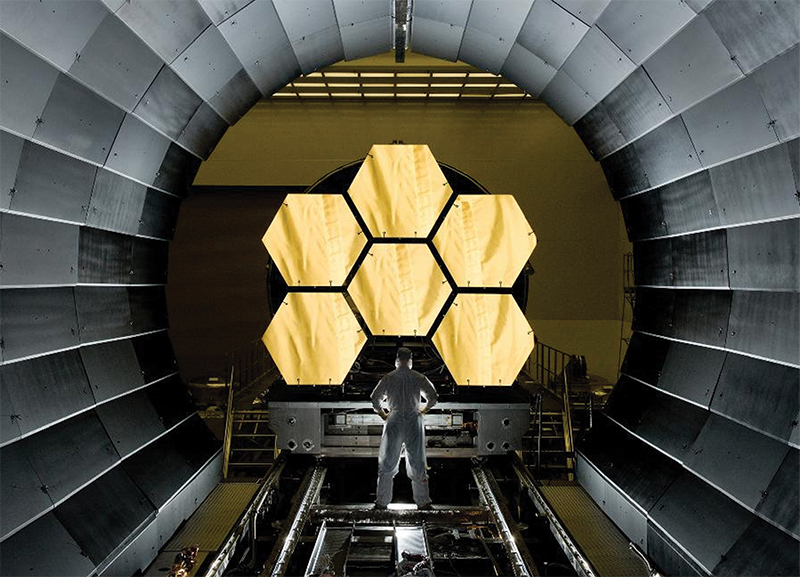
Interferometers Sharpen Measurements for Better Telescopes
NASA Technology
Over the last decade, there have been a number of innovations that have made possible the largest and most powerful telescope of its time: the James Webb Space Telescope (JWST). Scheduled to launch in 2018, JWST will provide insight into what the oldest, most distant galaxies look like.
When engineers build a first-of-its-kind instrument like the JWST, they often must make new tools to construct the new technology. Throughout the decades of planning, development, and construction of the JWST, NASA has worked with numerous partners to spur innovations that have enabled the telescope’s creation. Though the JWST’s launch date is still several years away, a number of these innovations are spinning off to provide benefits here on Earth.
One of these spinoffs has emerged from the extensive testing the JWST must undergo to ensure it will function in the extreme environment of space. In order to test the JWST instruments in conditions that closely resemble those in space, NASA uses a cryogenic vacuum chamber. By dropping the temperatures down to -400 °F and employing powerful pumps to remove air from the chamber, engineers can test whether the JWST instruments will function once the spacecraft leaves Earth.
Traditionally, a phase-shifting interferometer is used to measure optics like the JWST’s mirrors to verify their precise shape—down to tens of nanometers—during manufacturing. However, the large size of the mirrors, coupled with vibration induced by the cryo-pumps, prohibits the use of traditional phase-shifting interferometers to measure the mirrors within the chamber environment. Because the JWST will be located in deep space, far from any possible manned service mission, it was essential to find a robust solution to guarantee the performance of the mirrors.
Technology Transfer
In 2000, NASA started contract work with a company called 4D Vision Technology—later acquired by Tucson, Arizona-based 4D Technology Corporation—to develop interferometers that could test large space mirrors and structures more accurately in the chamber environment.
In response to NASA’s need, the company integrated a special phase sensor they had developed with an optical system to create a new technology called dynamic interferometry that could take measurements much more quickly than traditional interferometers. The dynamic interferometer was insensitive to vibration and could average out the effects of environmental noise to provide more accurate data.
“The acquisition time is thousands of times faster than that of a traditional phase-shifting interferometer, and fast enough to render the instrument insensitive to the effects of vibration and other environmental noise,” says Mike Zecchino, marketing communications manager at 4D.
The first interferometer incorporating the technology was called PhaseCam, installed for testing NASA’s large telescope mirrors. “It verified the surface shape of telescope mirror segments and aided the polishing process to ensure that the segments would retain that required shape in the cold vacuum of space,” Zecchino says.
By 2005, NASA selected 4D as the primary metrology vendor for the JWST, and in 2006 the company earned a prestigious R&D 100 Award from the editors of R&D Magazine as one of the 100 most technologically significant new products created that year.
Ritva Keski-Kuha, an optical physics engineer at Goddard Space Flight Center, says 4D’s interferometers are critically important to “prove out” JWST telescope technology. In total, 4D has provided nine powerful instruments to NASA and its partners.
“The technology provides accurate measurements for space hardware at a few nanometers accuracy. Prior to “this, nothing existed that could do what 4D’s technology does.” Keski-Kuha says.
Benefits
Today, 4D is thriving as a result of its NASA innovations. Zecchino says the partnership has led to the development of products that have sold in the hundreds in more than a dozen different countries. In addition, 4D has grown from a 4-person startup to over 30 employees, thanks in large part to programs that started with NASA.
“4D’s main technology—dynamic interferometry—and most of 4D’s product lines, trace their lineage to the JWST project or to projects that directly developed technology for JWST,” says Zecchino.
Alongside its NASA work, the company has refined and enhanced its dynamic interferometers for general use in the optics, astronomy, aerospace, data storage, university research, manufacturing, and medical industries.
The technology is now being used in laboratories, clean rooms, environmental chambers, and production environments where vibration is an intrinsic and detrimental facet of the manufacturing process. One of 4D’s interferometers was even recently delivered to a facility where vibration from a proposed adjacent streetcar line was predicted to cause disturbance of the facility and restrict the ability to take accurate measurements of optics under test. While several options were considered to lessen the effects, an interferometer from 4D mitigated the vibration at approximately 1/10th the cost of other proposed methods.
4D believes that NASA-derived dynamic interferometry has been a significant contributor to the development of the current generation of ground and space based telescopes, and that it has also helped ensure the performance of satellite optics. Customers who used to spend time waiting for low vibration conditions so they could measure large optics can now measure at virtually any time. The technology also reduces the total time required to test optics—often from days to hours, with data delivery in seconds.
Ultimately, such developments will not only benefit industry, but everyone on Earth—as soon as JWST sends back its first bits of data from space.
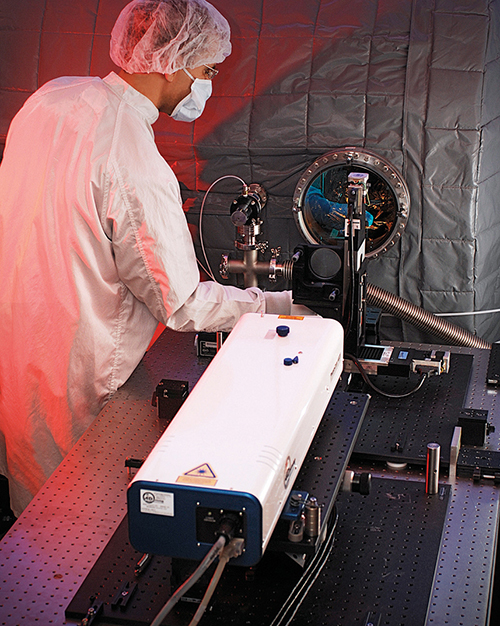
4D Technology Corporation developed the PhaseCam to test NASA’s telescope mirrors. Here, it measures an optic inside an environmental chamber. Image courtesy of Ball Aerospace

Here, the primary mirror segments for the James Webb Space Telescope (JWST) are prepped to begin final cryogenic testing. The technology developed for testing the JWST mirrors has been refined for the optics, astronomy, data storage, university research, manufacturing, and medical industries.








